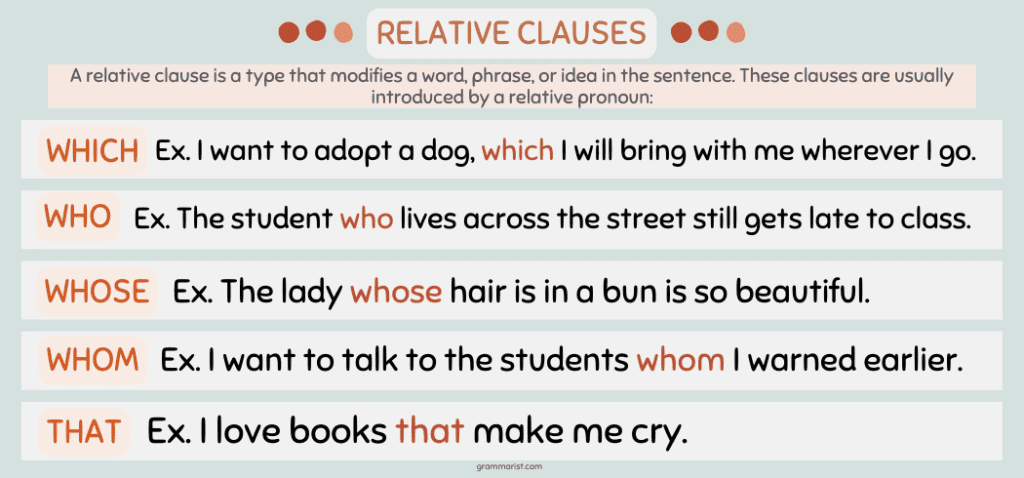The first worksheet is all about the basic definition and rules for its correct usage, while the second activity focuses on identifying the relative clause in the sentence. The last worksheet will ask you to choose the correct relative pronoun to complete the sentence.
What Are Relative Clauses?

Relative clauses are a kind of dependent clause that starts with relative pronouns which, who, whom, whose, and that. For example:
- I like the paintings. The paintings hang on the wall.
- I like the paintings that hang on the wall.
Here, the relative clause is that hang on the wall, defining the noun paintings.
Here are the different functions of relative pronouns in relative clauses.
- Who is used for people as subject nouns or pronouns.
- Whom is used for people as object nouns or pronouns.
- Whose is used for possessive nouns or pronouns.
- That is used for restrictive relative clauses.
- Which is used for non-restrictive relative clauses with commas.
A restrictive relative clause gives essential information about the noun using that or who. That means we cannot remove the relative clause from the sentence. For example:
- Children who listen to their parents are obedient.
In this sentence, the relative clause is who listen to their parents.
A non-restrictive relative clause provides extra information that is not essential to the definition of the noun. For example:
- My father, who is an engineer, is opening a construction company soon.
In this sentence, the non-restrictive relative clause is who is an engineer.
Never use that in non-restrictive relative clauses.